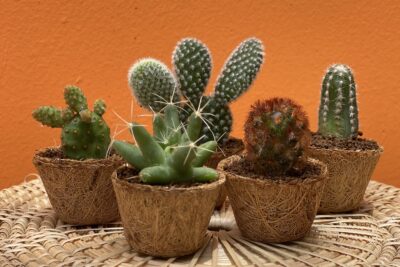
Can Succulents Die from Overwatering and Lack of Sunlight?

Succulents have become increasingly popular in recent years, adorning homes and gardens with their unique shapes and vibrant colors. These drought-tolerant plants are known for their ability to store water in their leaves, stems, and roots, allowing them to survive in arid conditions. However, despite their reputation for being low-maintenance, succulents can still suffer from certain environmental conditions, such as overwatering and lack of sunlight.
We will explore the effects of overwatering and lack of sunlight on succulents. We will discuss how overwatering can lead to root rot and other diseases, as well as the signs to look out for if your succulent is being overwatered. Additionally, we will delve into the importance of sunlight for succulents, including the ideal amount and intensity of light they require. By understanding these factors, you will be equipped with the knowledge to properly care for your succulents and ensure their long-term health and vitality.
- Yes, succulents can die from overwatering and lack of sunlight
- Overwatering can cause root rot and lead to the death of succulents
- Lack of sunlight can cause succulents to become weak and leggy
- To prevent overwatering, allow the soil to completely dry out between waterings
- Ensure that succulents receive at least 6 hours of direct sunlight per day
- If a succulent is showing signs of overwatering or lack of sunlight, adjust its care accordingly
- Proper drainage and well-draining soil are essential for preventing overwatering
- Providing supplementary artificial light can help succulents thrive in low-light conditions
- Regularly inspect succulents for any signs of stress or decline
- Adjust watering and sunlight levels based on the specific needs of each succulent variety
- Frequently Asked Questions
Yes, succulents can die from overwatering and lack of sunlight
Overwatering and lack of sunlight are two common mistakes that succulent owners make, often resulting in the death of these hardy plants. While succulents are known for their ability to survive in arid conditions, they still need the right balance of water and sunlight to thrive.
1. Overwatering
One of the biggest threats to succulents is overwatering. These plants have adapted to survive in dry environments by storing water in their leaves and stems. When they are overwatered, the excess moisture can lead to root rot and other fungal diseases.
To avoid overwatering your succulents, it is important to understand their watering needs. Succulents typically prefer a thorough watering followed by a period of drying out. Allow the soil to completely dry out between waterings, and make sure the pot has proper drainage to prevent water from sitting in the bottom.
Remember, it's better to underwater than overwater your succulents. They are more likely to survive a period of drought than constant moisture.
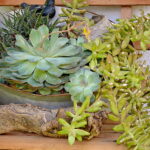 Trimming Succulents: Can I Safely Prune the Top of an Overgrown Plant?
Trimming Succulents: Can I Safely Prune the Top of an Overgrown Plant?2. Lack of Sunlight
Succulents are sun-loving plants and require several hours of direct sunlight each day to thrive. Without enough sunlight, they may become etiolated, which means they will elongate and stretch towards the nearest light source in an attempt to get more light.
If your succulents are not receiving enough sunlight, they may become weak, leggy, and lose their vibrant colors. To prevent this, place your succulents in a location where they can receive at least 6 hours of direct sunlight daily. If you are growing them indoors, consider placing them near a south-facing window or using grow lights to supplement the natural light.
While succulents are known for their resilience, they are not invincible. Overwatering and lack of sunlight are two common mistakes that can lead to their demise. By understanding their watering needs and providing them with adequate sunlight, you can ensure the health and longevity of your succulents.
Overwatering can cause root rot and lead to the death of succulents
Overwatering is one of the most common mistakes that succulent owners make, and it can have serious consequences for the health of these plants. While succulents are known for their ability to store water in their leaves and stems, they are not immune to the damaging effects of overwatering.
When succulents are overwatered, their roots can become waterlogged, leading to root rot. Root rot occurs when the roots are constantly exposed to excessive moisture, causing them to become soft, mushy, and eventually decay. This can severely impact the plant's ability to absorb water and nutrients, ultimately leading to its demise.
To avoid overwatering your succulents, it's important to understand their specific watering needs. Most succulents prefer well-draining soil, so make sure to use a potting mix specifically designed for succulents or add perlite or sand to improve drainage. Additionally, only water your succulents when the soil is completely dry, and always water them from the bottom rather than from the top to prevent excessive moisture from sitting on the leaves.
Signs of overwatering in succulents:
 Can Succulents Survive a Freeze Unprotected?
Can Succulents Survive a Freeze Unprotected?- Yellowing or wilting leaves
- Soft, mushy roots
- Black or brown spots on the leaves or stems
- Foul odor coming from the soil
- Visible mold or fungus on the plant
If you notice any of these signs, it's crucial to take immediate action to save your succulent. First, remove the plant from its pot and gently shake off any excess soil. Inspect the roots and cut off any rotten or damaged parts using a clean, sharp knife. Allow the plant to dry out completely before repotting it in fresh, well-draining soil. Avoid watering the succulent for a few days to give it time to recover.
Lack of sunlight can cause succulents to become etiolated
Continue writing the content only for that heading:
Lack of sunlight can cause succulents to become weak and leggy
When it comes to succulents, sunlight is a crucial factor for their overall health and appearance. Lack of sunlight can cause succulents to become weak and leggy, searching for more light to sustain themselves. This is known as etiolation, a condition where the succulent's stems elongate and leaves become spaced out.
Without sufficient sunlight, succulents are unable to undergo proper photosynthesis, the process by which they convert sunlight into energy. As a result, their growth becomes stunted, and their vibrant colors may fade. This lack of energy can weaken the plant and make it more susceptible to diseases and pests.
To prevent succulents from becoming leggy and weak, it is essential to provide them with adequate sunlight. Most succulents thrive in bright, indirect light, such as near a south-facing window or outdoors in a sunny spot. However, it is crucial to avoid exposing them to intense, direct sunlight for extended periods, as this can lead to sunburn and damage the plant.
One way to ensure your succulents receive enough sunlight is by rotating them regularly. By turning the plant every few days, you ensure that all sides receive an equal amount of light, promoting even growth and preventing the plant from leaning towards the light source.
 Protecting Succulents: Tips for Cold Weather Survival
Protecting Succulents: Tips for Cold Weather SurvivalIf you notice your succulent stretching towards the light or becoming pale, it is a sign that it needs more sunlight. Consider moving it to a brighter location or supplementing with artificial grow lights to provide the necessary light energy.
Remember that different succulent species have varying light requirements, so it is important to research the specific needs of your succulent. Some succulents, like Echeverias, prefer more shade and can become damaged if exposed to too much direct sunlight.
Lack of sunlight can have detrimental effects on succulents, causing them to become weak, leggy, and prone to diseases. Providing them with the right amount of bright, indirect sunlight is crucial for their overall health and vibrant appearance.
To prevent overwatering, allow the soil to completely dry out between waterings
One of the biggest mistakes succulent owners make is overwatering their plants. Succulents are adapted to survive in arid conditions, meaning they store water in their leaves, stems, and roots. Overwatering can lead to root rot and ultimately kill the plant.
To prevent overwatering, it is crucial to allow the soil to completely dry out between waterings. This means waiting until the top inch or two of soil is dry before watering again. You can check the moisture level by sticking your finger into the soil or using a moisture meter. If the soil feels damp, hold off on watering.
It's important to note that the frequency of watering may vary depending on factors such as the type of succulent, the size of the pot, and the climate. Succulents in smaller pots or those placed in humid environments may require less frequent watering compared to larger pots or dry climates.
Additionally, it's crucial to choose well-draining soil for your succulents. Regular potting soil can retain too much moisture, leading to overwatering. You can either purchase cactus or succulent-specific soil or create your own by mixing regular potting soil with coarse sand or perlite.
 Using Regular Miracle Gro Fertilizer: Is it Suitable for Succulents?
Using Regular Miracle Gro Fertilizer: Is it Suitable for Succulents?Remember, when it comes to watering succulents, less is more. It's better to underwater than to overwater. Succulents are resilient plants that can tolerate drought-like conditions, but they cannot survive in constantly wet soil.
Ensure that succulents receive at least 6 hours of direct sunlight per day
One of the most common mistakes people make when caring for succulents is not providing them with enough sunlight. Succulents are sun-loving plants that thrive in bright, direct light. Without proper sunlight, succulents can become weak, leggy, and lose their vibrant colors.
It is important to ensure that your succulents receive at least 6 hours of direct sunlight per day. Place them near a sunny window or in an area where they can soak up the sun's rays. If you notice that your succulents are not getting enough light, you can consider using artificial grow lights to supplement their light needs.
Overwatering can be detrimental to succulents
While succulents are known for their ability to store water in their leaves, overwatering can actually be harmful to them. Succulents have adapted to survive in arid conditions, and they are highly susceptible to root rot if they are overwatered.
It is important to establish a watering routine that allows the soil to dry out completely between waterings. Succulents prefer to be underwatered rather than overwatered, as they can tolerate drought conditions better than excessive moisture.
- Make sure to use well-draining soil for your succulents.
- Water your succulents deeply but infrequently, allowing the water to soak into the soil.
- Avoid misting or spraying water on the leaves of your succulents, as this can lead to rot.
- Monitor the moisture level of the soil using a moisture meter or by checking if the top inch of soil is dry before watering again.
The importance of finding the right balance
When it comes to caring for succulents, finding the right balance between sunlight and water is crucial. Too much sunlight can cause sunburn and damage the leaves of your succulents, while too little sunlight can lead to etiolation and weak growth.
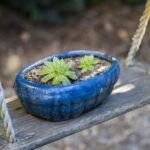 Succulent Care on Wood: A Guide to Proper Maintenance
Succulent Care on Wood: A Guide to Proper MaintenanceSimilarly, overwatering can cause root rot and ultimately kill your succulents, while underwatering can lead to dehydration and stunted growth. It is important to observe your succulents closely and make adjustments to their care routine as needed.
Remember, each succulent variety may have slightly different light and water requirements, so it is important to research the specific needs of the succulents you own. By providing them with the right amount of sunlight and water, you can ensure that your succulents thrive and stay healthy for years to come.
If a succulent is showing signs of overwatering or lack of sunlight, adjust its care accordingly
It is a common misconception that succulents are indestructible and can survive in any condition. While they are known for their ability to thrive in arid environments, succulents can still suffer from overwatering and lack of sunlight, which can ultimately lead to their demise.
Overwatering is one of the most common reasons why succulents die. Succulents have specialized leaves and stems that store water, allowing them to survive in dry conditions. However, when they are exposed to excessive moisture, their roots can become waterlogged, leading to root rot. Signs of overwatering include yellowing leaves, mushy stems, and a foul odor emanating from the soil.
To prevent overwatering, it is crucial to allow the soil to dry out completely between waterings. This can be achieved by using well-draining soil and pots with drainage holes. Additionally, avoid watering your succulent on a set schedule and instead, check the moisture level of the soil before deciding to water.
On the other hand, lack of sunlight can also be detrimental to succulents. Succulents are desert plants that require bright, direct sunlight to thrive. If they are not receiving enough light, they may become etiolated, meaning they will stretch out and become weak and pale. Lack of sunlight can also cause the leaves to lose their vibrant colors and become dull.
To ensure your succulents receive adequate sunlight, place them in a location where they can receive at least six hours of direct sunlight per day. If you are growing them indoors, consider placing them near a south-facing window or using artificial grow lights to supplement the sunlight.
 Reviving an Overwatered Succulent: Tips to Save Your Plant
Reviving an Overwatered Succulent: Tips to Save Your PlantIt is important to note that succulents are adaptable plants, and they can recover from overwatering or lack of sunlight if the issue is addressed promptly. Adjusting their care by providing the right amount of water and sunlight will help revive them and prevent further damage.
Remember, succulents are not invincible, and giving them the proper care they need is crucial for their survival. By avoiding overwatering and ensuring they receive enough sunlight, your succulents will continue to thrive and bring beauty to your space.
Proper drainage and well-draining soil are essential for preventing overwatering
When it comes to succulents, one of the biggest mistakes that many people make is overwatering. Succulents are known for their ability to store water in their leaves and stems, making them extremely resilient in dry conditions. However, too much water can be detrimental to their health.
One of the key factors in preventing overwatering is ensuring proper drainage. Succulents thrive in well-draining soil that allows excess water to flow out easily. To achieve this, it is important to use a pot with drainage holes at the bottom. This way, any excess water can escape and prevent the roots from sitting in soggy soil.
Additionally, choosing a well-draining soil mix specifically formulated for succulents is crucial. These mixes often contain ingredients such as perlite or sand, which help increase drainage and prevent water from pooling around the roots.
It is also important to note that succulents have different water requirements depending on the season and the specific species. During the active growing season, succulents may require more frequent watering, while in the dormant period, they need significantly less water.
Signs of overwatering in succulents
Overwatering can lead to a variety of issues in succulents. One of the first signs to look out for is yellowing or mushy leaves. This indicates that the succulent is retaining too much water and is unable to expel it properly.
 Succulent Care: Pruning Damaged Leaves
Succulent Care: Pruning Damaged LeavesAnother common sign of overwatering is root rot. When the roots are constantly submerged in water, they become susceptible to fungal infections and start to decay. This can cause the plant to lose its stability and eventually die.
Furthermore, overwatering can lead to the growth of mold or fungus on the soil surface, which can further damage the succulent's health.
The importance of sunlight for succulents
In addition to overwatering, the lack of sunlight can also have a negative impact on succulents. These plants are adapted to thrive in bright and sunny conditions, and without adequate sunlight, they may become weak and leggy.
Succulents require at least six hours of direct sunlight per day to maintain their vibrant colors and compact growth. Insufficient sunlight can cause the leaves to stretch or become pale, as the plant tries to reach for the light source.
Placing your succulents near a sunny window or providing them with artificial grow lights can help ensure they receive the necessary amount of sunlight for healthy growth.
The balance between water and sunlight
Finding the right balance between water and sunlight is crucial for the overall well-being of your succulents. It is important to understand the specific needs of your succulent species and adjust your care routine accordingly.
By providing proper drainage, using well-draining soil, and monitoring the amount of sunlight your succulents receive, you can prevent overwatering and ensure they thrive in their environment.
 The Ultimate Guide to Succulent Care: Everything You Need to Know
The Ultimate Guide to Succulent Care: Everything You Need to KnowProviding supplementary artificial light can help succulents thrive in low-light conditions
Succulents are known for their ability to survive in harsh conditions, but can they die from overwatering and lack of sunlight? The answer is yes. While succulents are drought-tolerant plants that can withstand periods of neglect, they still require some basic care to thrive.
One of the main factors that can contribute to the decline of succulents is overwatering. Succulents have adapted to store water in their leaves, stems, and roots, allowing them to survive in arid environments. However, when they are overwatered, the excess moisture can lead to root rot and other problems. It is crucial to let the soil dry out between waterings and avoid waterlogged conditions.
Likewise, lack of sunlight can also be detrimental to the health of succulents. These plants typically thrive in bright, indirect light or even full sun in some cases. Without sufficient light, succulents may become leggy, elongated, and may lose their vibrant colors. They may also struggle to photosynthesize, which is essential for their growth and energy production.
So, what can be done to help succulents thrive in low-light conditions? One solution is to provide supplementary artificial light. By using grow lights or fluorescent tubes designed for plants, you can mimic natural sunlight and ensure that your succulents receive the light they need.
When using artificial lights, it's important to consider the duration and intensity of the light. Most succulents need at least 6 hours of light each day, but some may require even more. Make sure to position the lights close enough to the plants to provide sufficient intensity.
Additionally, it's crucial to maintain a proper watering routine for succulents in low-light conditions. Since these plants won't be able to dry out as quickly as they would in brighter light, it's essential to adjust the watering frequency accordingly. Be sure to allow the soil to dry out completely between waterings to prevent root rot.
While succulents are hardy plants, they can still suffer from overwatering and lack of sunlight. Providing supplementary artificial light and adjusting the watering routine can help these plants thrive in low-light conditions and prevent their demise.
 Preventing Succulent Stem Growth: Tips for Compact, Healthy Plants
Preventing Succulent Stem Growth: Tips for Compact, Healthy PlantsRegularly inspect succulents for any signs of stress or decline
Succulents are known for their ability to thrive in harsh conditions, but that doesn't mean they are invincible. While they are more resilient than other types of plants, they can still suffer from overwatering and lack of sunlight. It is crucial to regularly inspect your succulents for any signs of stress or decline to ensure their long-term health and survival.
Overwatering: A Common Mistake
One of the biggest mistakes succulent owners make is overwatering. Succulents are native to arid environments and have evolved to store water in their leaves and stems. They are adapted to survive in dry conditions, and their roots are susceptible to rot if they are constantly sitting in moist soil.
When succulents are overwatered, their leaves may become soft and mushy, and the plant may appear wilted or discolored. The roots may also start to rot, leading to further decline and ultimately death if the issue is not addressed.
To prevent overwatering, it is essential to understand the watering needs of your specific succulent species. Most succulents prefer to dry out between waterings, so it is best to water them when the soil is completely dry. Additionally, make sure to provide proper drainage by using well-draining soil and pots with drainage holes.
Lack of Sunlight: Affecting Growth and Color
Succulents thrive in bright sunlight and require several hours of direct or indirect sunlight each day. Insufficient light can lead to elongated and weak growth, as succulents stretch towards the nearest light source. This phenomenon, known as etiolation, can cause the plant to become leggy and lose its compact, attractive form.
Lack of sunlight can also affect the coloration of succulents. Many succulents develop vibrant hues and patterns when exposed to adequate sunlight. Without enough light, these colors may fade, and the plant may appear dull and less visually appealing.
 Revive Your Dying Succulent with These Essential Tips
Revive Your Dying Succulent with These Essential TipsTo ensure your succulents receive enough sunlight, place them in a bright location near a window or provide artificial grow lights if natural light is limited. Rotate the plants occasionally to promote even growth and prevent them from leaning towards the light source.
Proper Care for Healthy Succulents
To keep your succulents healthy and thriving, it is important to strike a balance between watering and sunlight. Here are some general care tips:
- Water your succulents sparingly, allowing the soil to dry out between waterings.
- Ensure proper drainage by using well-draining soil and pots with drainage holes.
- Place your succulents in a bright location with several hours of sunlight each day.
- Rotate your succulents periodically to promote even growth and prevent etiolation.
- Monitor your succulents closely for any signs of stress or decline, and take prompt action if needed.
By providing the right amount of water and sunlight, you can help your succulents thrive and avoid the pitfalls of overwatering and lack of sunlight. Regularly inspect your plants, make adjustments to their care routine as necessary, and enjoy the beauty and uniqueness of these fascinating plants.
Adjust watering and sunlight levels based on the specific needs of each succulent variety
When it comes to taking care of succulents, finding the perfect balance of watering and sunlight is crucial. While these plants are known for their ability to thrive in harsh conditions, they can still suffer from overwatering and lack of sunlight. It's important to understand that different succulent varieties have varying needs, so adjusting the watering and sunlight levels accordingly is essential for their overall health.
Overwatering:
One of the most common mistakes succulent owners make is overwatering their plants. Succulents have adapted to survive in arid environments, so they have developed the ability to store water in their leaves and stems. When we water them too frequently or excessively, the excess moisture can lead to root rot and other issues.
To avoid overwatering, it's crucial to let the soil dry out completely between waterings. Stick your finger about an inch into the soil, and if it feels dry, it's time to water your succulent. Additionally, using well-draining soil and pots with drainage holes can help prevent water from sitting in the container.
Lack of Sunlight:
Succulents are sun-loving plants that thrive in bright, indirect light. Without enough sunlight, they may become weak, leggy, and lose their vibrant colors. However, it's important to note that not all succulents require the same amount of sunlight. Some varieties prefer full sun, while others can tolerate partial shade.
When positioning your succulents, it's best to place them near a window with bright, indirect light. If you notice your succulent stretching towards the light or the leaves becoming pale, it's an indication that it needs more sunlight. On the other hand, if the leaves start becoming brown or scorched, it might be getting too much direct sunlight.
Adjusting for Different Varieties:
Each succulent variety has its own specific needs when it comes to watering and sunlight. Some popular succulents, like Echeveria and Sedum, thrive in bright sunlight and require infrequent but deep watering. Others, like Haworthia and Sansevieria, can handle lower light levels and prefer less water.
To ensure the optimal care for your succulents, it's essential to research the specific requirements of each variety you own. This way, you can adjust the watering and sunlight levels accordingly and prevent both overwatering and lack of sunlight.
By finding the right balance of watering and sunlight, you can help your succulents thrive and avoid the potential risks of overwatering and lack of sunlight. Remember to observe your plants closely and make adjustments as needed, ensuring that each succulent variety receives the care it deserves.
Frequently Asked Questions
1. Can succulents die from overwatering and lack of sunlight?
Yes, overwatering can lead to root rot and eventually kill succulents. Lack of sunlight can cause them to become weak and leggy, leading to their demise.
2. How often should I water my succulents?
Succulents generally require watering once every 1-2 weeks, depending on the climate and the type of succulent. It's important to allow the soil to dry out completely between waterings.
3. Do succulents need direct sunlight?
Yes, most succulents need at least 6 hours of direct sunlight each day to thrive. However, some varieties can tolerate partial shade or indirect sunlight.
4. How can I prevent overwatering my succulents?
To prevent overwatering, make sure the pot has drainage holes to allow excess water to escape. Use a well-draining soil mix specifically designed for succulents, and only water when the soil is completely dry.
If you want to read more articles similar to Can Succulents Die from Overwatering and Lack of Sunlight?, you can visit the Care and Maintenance category.

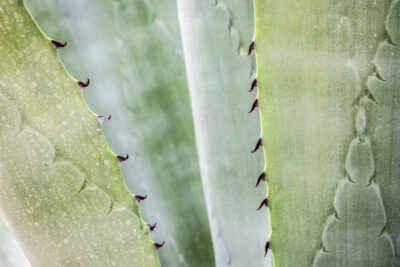



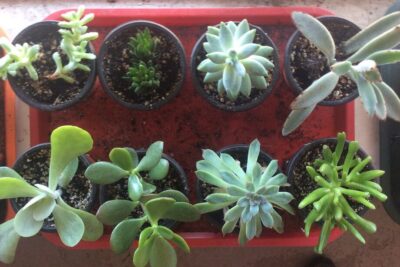
You Must Read